
How to Use xl4015 Step-Down DC/DC: Examples, Pinouts, and Specs
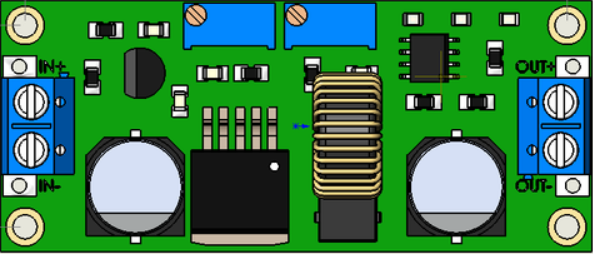
 Design with xl4015 Step-Down DC/DC in Cirkit Designer
Design with xl4015 Step-Down DC/DC in Cirkit DesignerIntroduction
The XL4015 is a high-efficiency step-down (buck) DC-DC converter designed to convert a higher input voltage to a lower output voltage. It is capable of delivering up to 5A of output current, making it ideal for applications requiring high current and adjustable voltage. The XL4015 features thermal protection, short-circuit protection, and a wide input voltage range, ensuring reliable operation in various environments.
Explore Projects Built with xl4015 Step-Down DC/DC
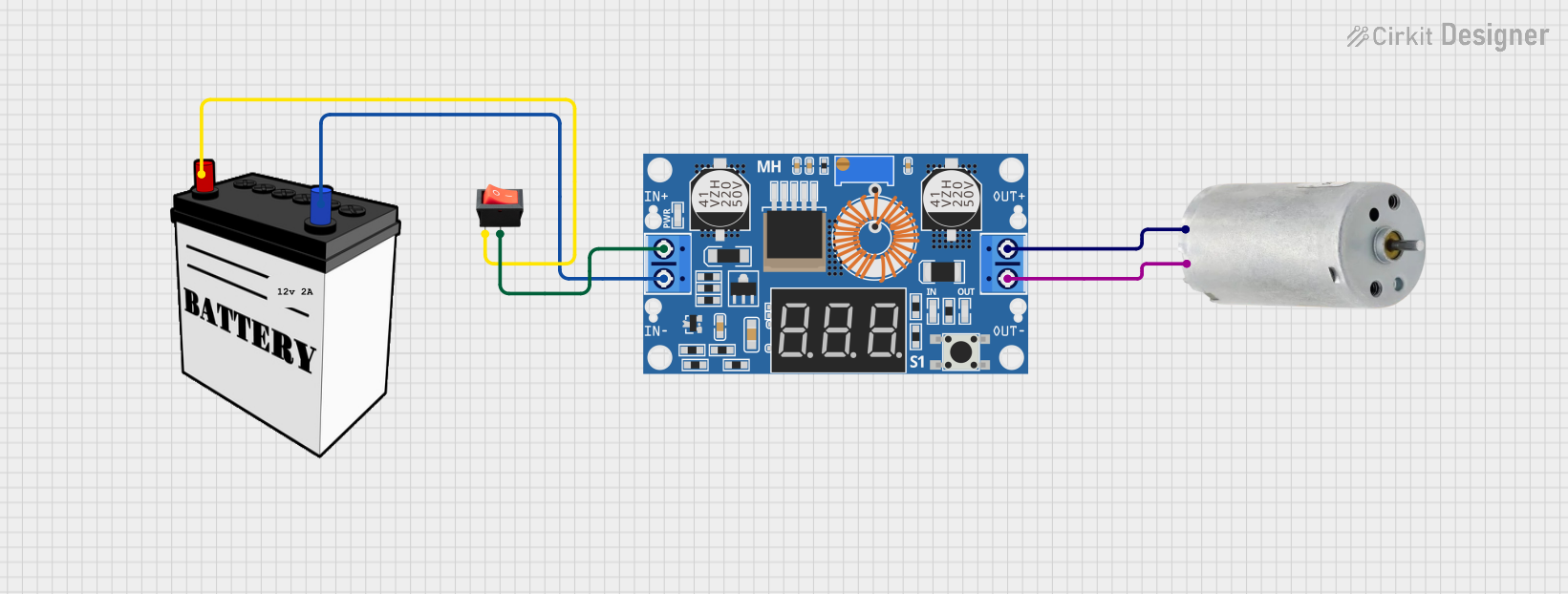
 Open Project in Cirkit Designer
Open Project in Cirkit Designer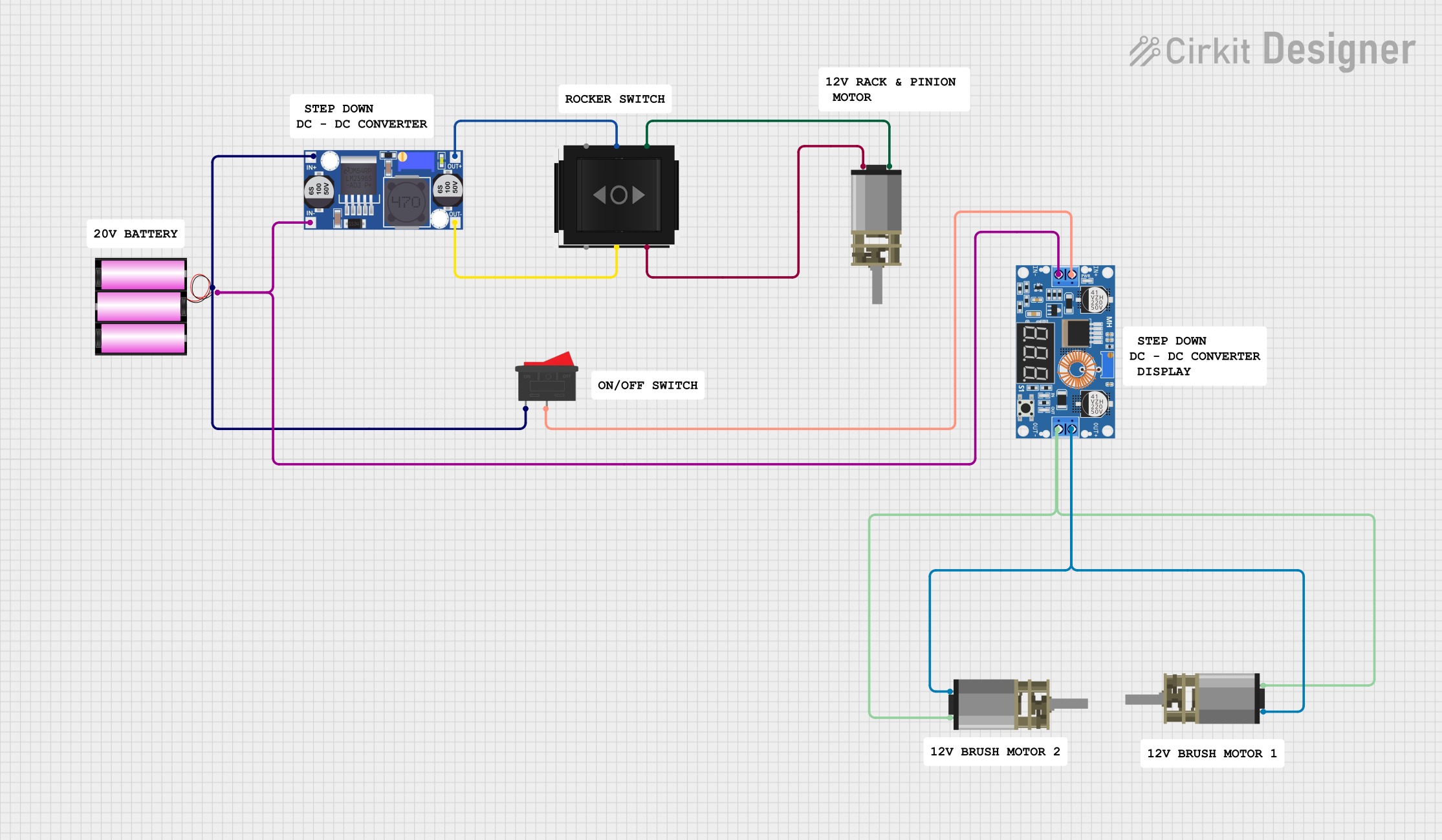
 Open Project in Cirkit Designer
Open Project in Cirkit Designer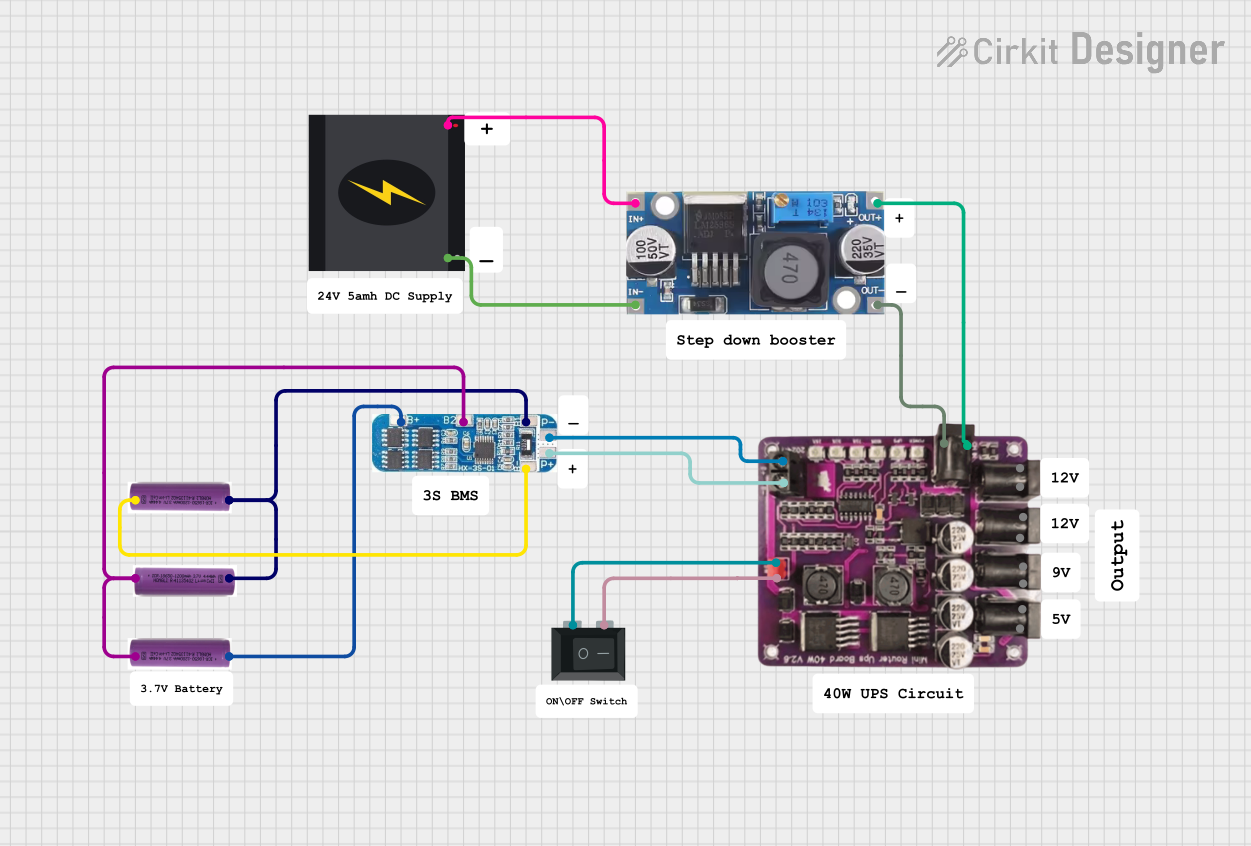
 Open Project in Cirkit Designer
Open Project in Cirkit Designer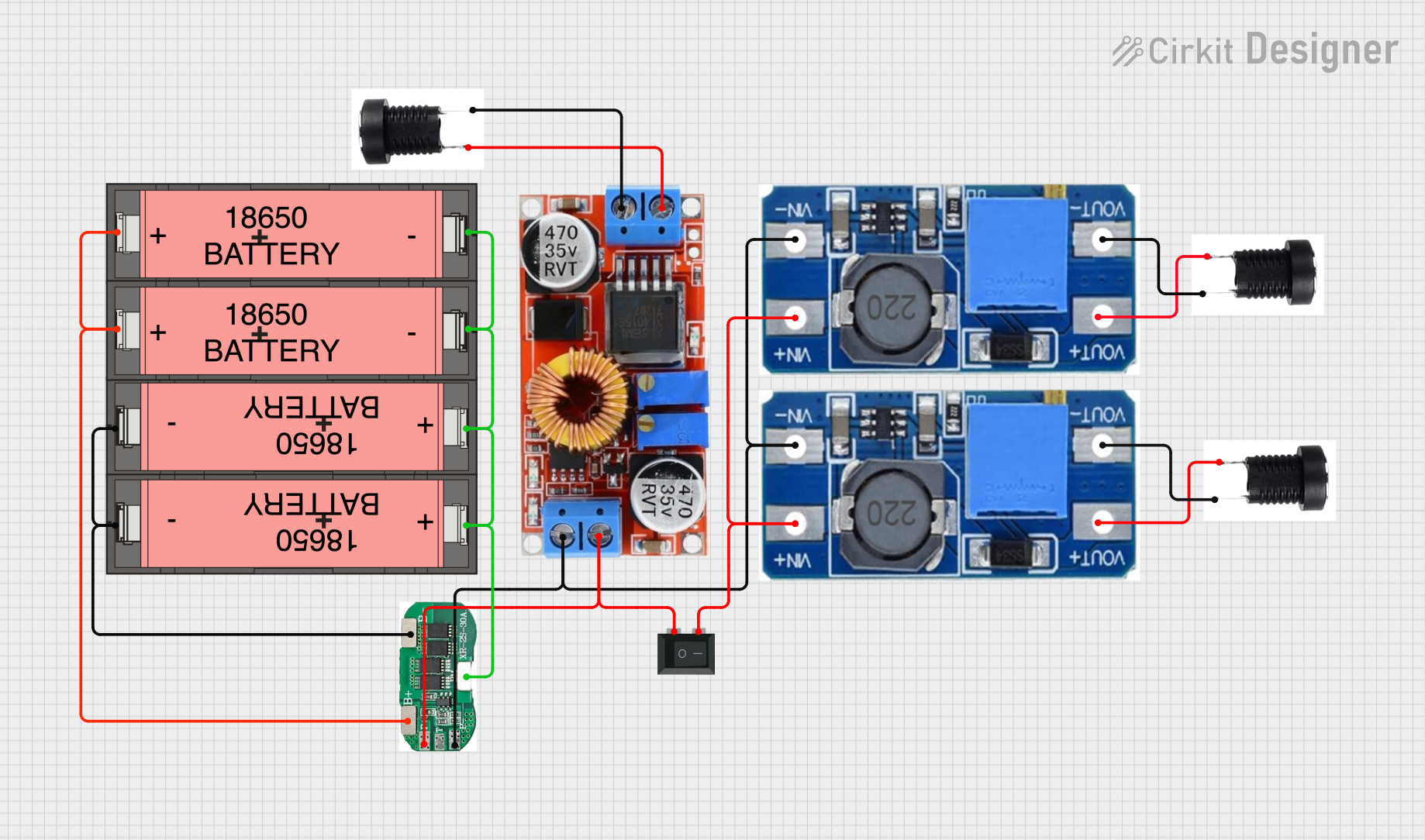
 Open Project in Cirkit Designer
Open Project in Cirkit DesignerExplore Projects Built with xl4015 Step-Down DC/DC

 Open Project in Cirkit Designer
Open Project in Cirkit Designer
 Open Project in Cirkit Designer
Open Project in Cirkit Designer
 Open Project in Cirkit Designer
Open Project in Cirkit Designer
 Open Project in Cirkit Designer
Open Project in Cirkit DesignerCommon Applications
- Battery charging circuits
- LED drivers
- Power supplies for microcontrollers and embedded systems
- Solar power systems
- General-purpose DC voltage regulation
Technical Specifications
The XL4015 is a versatile and robust component. Below are its key technical details:
| Parameter | Value |
|---|---|
| Input Voltage Range | 4V to 38V |
| Output Voltage Range | 1.25V to 36V (adjustable) |
| Maximum Output Current | 5A |
| Switching Frequency | 180 kHz |
| Efficiency | Up to 96% |
| Output Ripple Voltage | ≤ 50mV |
| Operating Temperature | -40°C to +85°C |
| Protection Features | Thermal shutdown, short-circuit |
Pin Configuration and Descriptions
The XL4015 module typically comes with the following pins:
| Pin Name | Description |
|---|---|
| VIN | Input voltage pin. Connect the higher input voltage (4V to 38V). |
| VOUT | Output voltage pin. Provides the regulated lower voltage (1.25V to 36V). |
| GND | Ground pin. Connect to the ground of the circuit. |
| ADJ | Adjustment pin. Used to set the output voltage via a potentiometer or resistor. |
Usage Instructions
How to Use the XL4015 in a Circuit
Connect Input Voltage:
- Connect the positive terminal of the input voltage source to the
VINpin. - Connect the negative terminal of the input voltage source to the
GNDpin. - Ensure the input voltage is within the range of 4V to 38V.
- Connect the positive terminal of the input voltage source to the
Set Output Voltage:
- Use the onboard potentiometer to adjust the output voltage.
- Turn the potentiometer clockwise to increase the output voltage and counterclockwise to decrease it.
- Measure the output voltage across the
VOUTandGNDpins using a multimeter.
Connect the Load:
- Connect the positive terminal of the load to the
VOUTpin. - Connect the negative terminal of the load to the
GNDpin.
- Connect the positive terminal of the load to the
Verify Connections:
- Double-check all connections to ensure proper polarity and secure wiring.
Power On:
- Power on the input voltage source and verify the output voltage and current.
Important Considerations and Best Practices
- Heat Dissipation: The XL4015 can generate heat under high current loads. Use a heatsink or active cooling if the module becomes too hot.
- Input Voltage: Ensure the input voltage is at least 1.5V higher than the desired output voltage for proper regulation.
- Current Limitation: Do not exceed the maximum output current of 5A to avoid damaging the module.
- Output Ripple: Add a capacitor (e.g., 100µF) across the output terminals to reduce ripple voltage if needed.
Example: Using XL4015 with Arduino UNO
The XL4015 can be used to power an Arduino UNO by stepping down a higher voltage (e.g., 12V) to 5V. Below is an example:
- Connect a 12V power source to the
VINandGNDpins of the XL4015. - Adjust the output voltage to 5V using the potentiometer.
- Connect the
VOUTpin of the XL4015 to the 5V pin of the Arduino UNO. - Connect the
GNDpin of the XL4015 to the GND pin of the Arduino UNO.
Here is a simple Arduino sketch to blink an LED, powered by the XL4015:
// Simple LED blink example for Arduino UNO
// Ensure the XL4015 is providing 5V to the Arduino UNO
const int ledPin = 13; // Built-in LED pin on Arduino UNO
void setup() {
pinMode(ledPin, OUTPUT); // Set LED pin as output
}
void loop() {
digitalWrite(ledPin, HIGH); // Turn the LED on
delay(1000); // Wait for 1 second
digitalWrite(ledPin, LOW); // Turn the LED off
delay(1000); // Wait for 1 second
}
Troubleshooting and FAQs
Common Issues and Solutions
No Output Voltage:
- Cause: Incorrect wiring or insufficient input voltage.
- Solution: Verify all connections and ensure the input voltage is within the specified range.
Output Voltage Not Adjustable:
- Cause: Faulty potentiometer or incorrect adjustment.
- Solution: Check the potentiometer for damage and adjust it carefully.
Module Overheating:
- Cause: High current load or poor heat dissipation.
- Solution: Add a heatsink or active cooling to the module.
High Output Ripple:
- Cause: Insufficient filtering.
- Solution: Add a capacitor (e.g., 100µF or higher) across the output terminals.
FAQs
Q: Can the XL4015 be used to charge batteries?
A: Yes, the XL4015 can be used for battery charging applications. However, ensure the output voltage and current are set according to the battery's specifications.
Q: What is the efficiency of the XL4015?
A: The XL4015 has an efficiency of up to 96%, depending on the input and output voltage difference and the load.
Q: Can I use the XL4015 with a solar panel?
A: Yes, the XL4015 is suitable for solar power systems. Ensure the input voltage from the solar panel is within the module's range.
Q: How do I protect the XL4015 from input voltage spikes?
A: Add a TVS diode or an input capacitor (e.g., 100µF) to protect the module from voltage spikes.